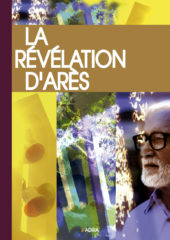Avant-propos : Ville / Foreword: City
Nous croyons, Nous ne croyons pas / We believe, we do not believe
Il y a amour et amour / There is love and love
Miasmes / Miasmas
Pia / Pia
Beauté / Beauty
Le mâché cru / The man chomped raw
Soupe / Soup kitchen
Enfants / Children
Souvenirs / Memories
Epilogue : Dieu recréé / Epilogue: God recreated
Pia
Extrait p. 164-166
« Je ne donnerai pas comme les dictionnaires une définition de la prière. Dieu l’a déjà donnée, irremplaçable : Prononcer Ma Parole pour l’accomplir, voilà la vraie piété (35/6). S’en éloigner revient, chacun le sait, à quitter la Voie Droite. Toutefois, nous entrons sur cette Voie avec pour peau le tissu de notre vie passée et de la culture, qu’il nous faut défiler. Nous quittons une certaine vie pour la Vie. Ni cette génération-ci ni même la quatrième (24/2) n’arrivera au terme du long voyage, mais tout converti nous arrivera avec une certaine prière et devra la changer en vraie piété.
« Pour l’immensité des croyants la prière remplit un besoin de compensation, d’échange, de consolation, ou bien un vide. Pour le croyant qui fonde sa foi sur La Révélation d’Arès la prière, tout autrement, fait partie d’un processus besogneux et interne de cause à effet : prier dans la Parole (la cause) le porte à accomplir ce qu’elle ordonne (l’effet) – J’attache ton pied à ta lèvre (XLIV / 4) – La prière traditionnelle est cri d’adorant ou de suppliant ; la prière arésienne cri de réalisateur, de conquérant. Cela ne va quand même pas de soi pour tous les Pèlerins d’Arès. »
Pia
Excerpt p. 165-167
« I am not going to give a definition of prayer as dictionaries do. God has already given it irreplaceable : Uttering my World in order to achieve it, this is true piety (35/6). As each of you knows, moving away from it comes down to leaving the Straight Path. But we enter the Path with the cloth of culture and of our past life as a skin, which we have to shred. We leave a certain life to enter Life. Neither this generation nor even the fourth (24/2) will reach the end of the long journey, but every convert will come to us with a certain prayer and will have to change it into the true piety. »
« To myriad believers prayer meets a want for compensation, exchange, consolation, or else fills emptiness. Quite differently to the believer who has based his faith on The Revelation of Arès prayer is part of an industrious inner process of cause and effect : To pray in the book of the World (the cause) leads him to achieve what it orders him to (the effect) – I fasten your foot to your lip (XLIV/4) – The traditional prayer is the cry of an adorer, or a suppliant ; the Aresian prayer is a realizer’s, a conqueror’s cry. This is not self-evident to all of the Arès Pilgrims, however. »
Beauté
Extrait p. 242
« La bouche répand la Parole ou le mensonge, dit : Je t’aime, ou : Je te hais, et la main donne ou dérobe, sauve ou tue, mais ni l’une ni l’autre n’a de nature active en soi ; c’est la bienfaisance ou la malfaisance qui les active. De même la beauté servante du Bien est une force active comme la beauté servante du mal, du péché, en est une autre, les deux étant existentielles sans égard à leurs véhicules. Ce n’est pas par la volonté existentielle qu’Agar est belle et désirable et que Sara est âgée, édentée, sans attrait ; ce ne sont pas leurs véhicules charnels mais ce qu’ils vont véhiculer avec succès qui est existentiel – ainsi l’art le mieux fait n’est pas actif en soi, dire « Je missionne par l’art » n’a pas grande signification en soi –. La vieille Sara devient beauté par excellence ; son oui laborieux (Genèse 18/11-15) crée en elle l’âme et la beauté de la sublime servitude. Il y a entre la beauté et sa force active la relation étroite qu’il y a entre l’âme et la toujours hésitante entité chair-et-esprit. La beauté du jardin revient par un fumier (XXII/9) de vieille femme stérile. Comme on le verra tous les jours, du reste, la beauté sous cent aspects renaîtra de la laideur, même si elle ne doit pas renaître que de cela. Par là-même pour définir la beauté dont parle Dieu, on voit bien qu’il faut dépasser l’esthétisme et ses contraintes. C’est l’addition de sa nature active et de sa nature essentielle, qui va être évoquée, qui hissera très haut la beauté et lui donnera puissance. »
Beauty
Excerpt p. 243
« The month spread either the World or lies, says either » I love you » or « I hate you », and the hand either gives or steals, either rescues or kills, but neither mouth nor hand has an active nature in itself ; it is benevolence or malevolence that activate them. Likewise beauty as the servant of Good is an active strength just as beauty as the servant of evil, of sin, is another, as both are existential over and above their vehicles. It is not by existential will that Hagar is beautiful and desirable and Sarah wasted with age, toothless, unattractive, not their bodily vehicles but what they will successfully convey is existential – So the best performed art is not active in itself saying « I missionize by art » is not very meaningful in itself-. Old Sarah becomes beauty par excellence ; her yes though she made heavy weather (Genesis 18/11-15) of saying it, create the soul and beauty of the sublime servanthood in her. Beauty and its active strength are as closely related to each other as the soul and the always wavering entity flesh-and-mind. The beauty of the garden comes back through a manure (XXII/9) of a sterile old woman. As we will see every day, besides, beauty in a hundred aspects will arise out of ugliness, even if it will not arise only from it.
For this reason we realize definitely that we have to transcend aestheticism and its constraints so as to define what God means by beauty. It is the addition of its essential nature, which is going to be brought up, to its active nature which will lift beauty, the servant of Good, very high, and give it strength.»




